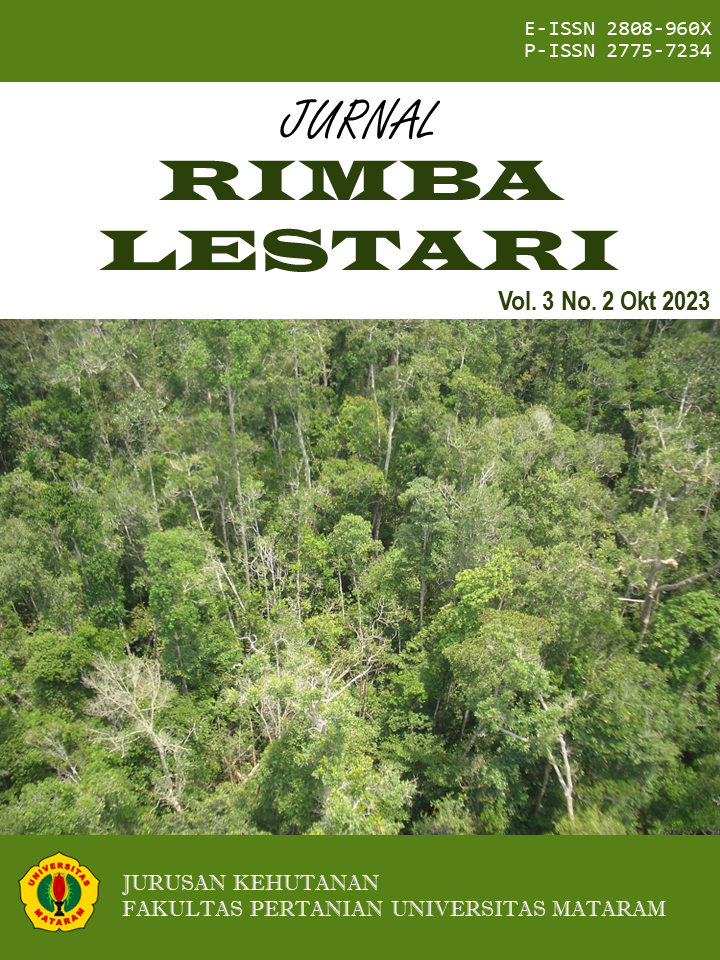EFFECTIVENESS OF AGROFORESTRY-BASED WATERSHED REHABILITATION IN SUPPORTING CARBON DIOXIDE REDUCTION IN THE MANAGEMENT AREA OF KTH HIJAU MAKMUR, WEST LOMBOK
Keywords:
Perubahan Iklim, Rehab DAS, Karbon Dioksida (CO2), agroforestriAbstract
Carbon dioxide (CO2) contributes significantly to global warming, leading to climate change that impacts human life. To mitigate emissions, Indonesia has committed to reducing greenhouse gas (GHG) emissions by 29% independently and 41% with international support by 2030, as outlined in its Nationally Determined Contribution (NDC). One of the strategies implemented is the Indonesia’s Forestry and Other Land Uses (FoLU) Net Sink 2030 program, prioritizing the forestry and land-use sectors. This study evaluates the effectiveness of agroforestry-based watershed rehabilitation activities in the area managed by Forest Famers Group (KTH) Hijau Makmur, Gelangsar Village, West Lombok Regency. The results show a high plant density level (>400–600 plants/ha), dominated by high-economic-value multipurpose tree species (MPTS) such as durian, mangosteen, avocado, and stink bean. The observed plants are categorized as seedlings and saplings (1–3 years old, height >1.5 meters, trunk diameter <10 cm). As the plants mature, their stem volume and canopy area are expected to enhance carbon sequestration through stems, roots, litter, and necromass. These findings indicate that agroforestry practices not only provide economic benefits but also support climate change mitigation by increasing carbon storage potential.










